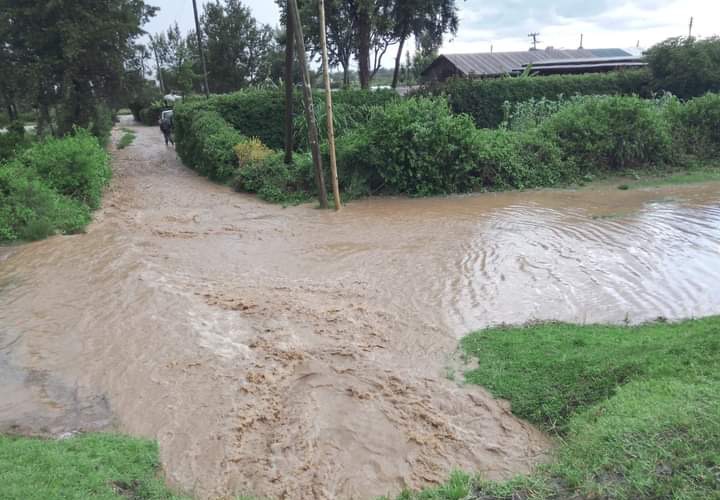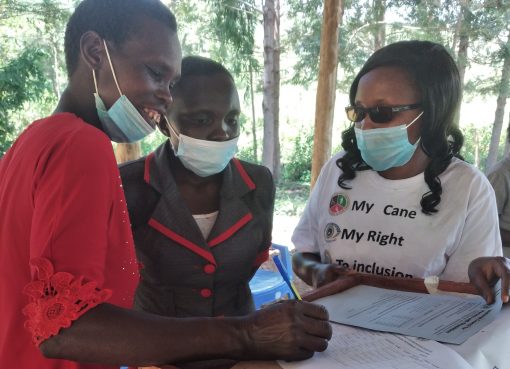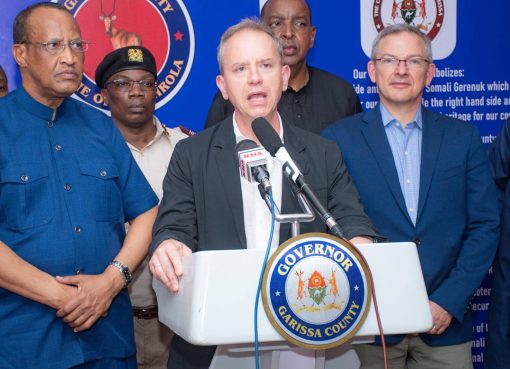Nyeri County Director of Meteorological Services Mr. John Muiruri has said that his office is still compiling his final report hours after the Kenya Meteorological Department (KMD) warned of a 99 percent likelihood of high El Nino rainfall across parts of the country.
Muiruri however disclosed the county will be spared from the expected Residents of Nyeri will have to wait till next week to get a comprehensive report on the expected floods and landslides synonymous with some parts of the country during above-average rains.
“You see, the national weather forecast was released yesterday (Wednesday) and after that, we embarked on a downscaling process for the specific counties. So right now, we are downscaling for the counties and I am currently doing the same for Nyeri but we will have to wait for the release of the official report next week,” he told KNA.
Early this month, Muiruri hinted at the possibility of Nyeri experiencing enhanced rains during the short rainy season owing to the influence of the El Nino weather phenomenon.
He, nevertheless, said the Department would issue a comprehensive report with regard to the October-November-December rains once they complete monitoring the changes in global climatic patterns.
“We are yet to receive the forecast for October -November -December and we are still monitoring the situation because we are seeing signals of having an experience of El Nino. So for now, I cannot say whether we are going to receive depressed rainfall but we are still monitoring the situation,” he said.
Addressing journalists in Nairobi yesterday, the Met Director Mr. David Gikungu said heavy continuous rainfall is expected in the Lake Victoria Basin region, Kisii, Elgeyo Marakwet, Bungoma, Trans Nzoia, West Pokot, Vihiga, Laikipia, Nakuru and Narok counties.
The rains will begin in September before picking up in October and will prevail on until January. In the north-western counties of Turkana, Marsabit and Samburu, the Met Department announced rainfall above the long-term average for the season is expected.
“In the highlands east of the Rift Valley, Nairobi included, rainfall is expected throughout the season above the season’s long-term average. The rainfall will be well distributed in terms of space,” said Gikungu.
In the lowlands, an expected above-long-term average for the season is expected; in the north-eastern counties, occasional rainfall of an amount slightly above average for the season will be experienced.
Wajir and Mandera counties will get the highest rainfall which will be occasioned by widespread flooding. Other areas likely to experience flooding include Nyakach, Nyando, lower areas of River Nzoia, Winam Gulf, and River Sondu in Western Kenya.
In the Rift Valley region, floods are likely to occur in Gilgil, Narok town and Suswa while the coastal towns of Mwatate, Tana River Delta and Mwatate have also been identified as high-risk areas.
On July 4 this year, the United Nations Meteorological Organization warned the world to prepare for the adverse effects of El Nino, saying the weather phenomenon that triggers higher global temperatures would persist throughout this year.
El Nino is a naturally occurring climate pattern typically associated with increased heat worldwide, as well as drought in some parts of the world and heavy rains in other parts.
El Nino is the large-scale warming of surface temperatures in the central and eastern equatorial Pacific Ocean. It usually occurs on average every two to seven years and lingers for a period of nine to 12 months.
“The onset of El Nino will greatly increase the likelihood of breaking temperature records and triggering more extreme heat in many parts of the world and in the ocean,” warned World Meteorological Organization Secretary General Mr. Petteri Taalas.
“The declaration of an El Nino by WMO is the signal to governments worldwide to mobilise preparations to limit the impacts on our health, ecosystems and economies,” said Taalas.
“Early warnings and anticipatory action of extreme weather events associated with this major climate phenomenon are vital to save lives and livelihoods,” he added.
El Nino events are typically associated with increased rainfall in parts of southern South America, the southern United States, the Horn of Africa and central Asia.
Kenya last experienced the of El Nino phenomena in 1997, resulting in exceptionally heavy rainfall and deadly floods. The consequent El Nino in 2015 had a higher index but led to lower rainfall, causing less significant effects than had been anticipated.
By Samuel Maina





